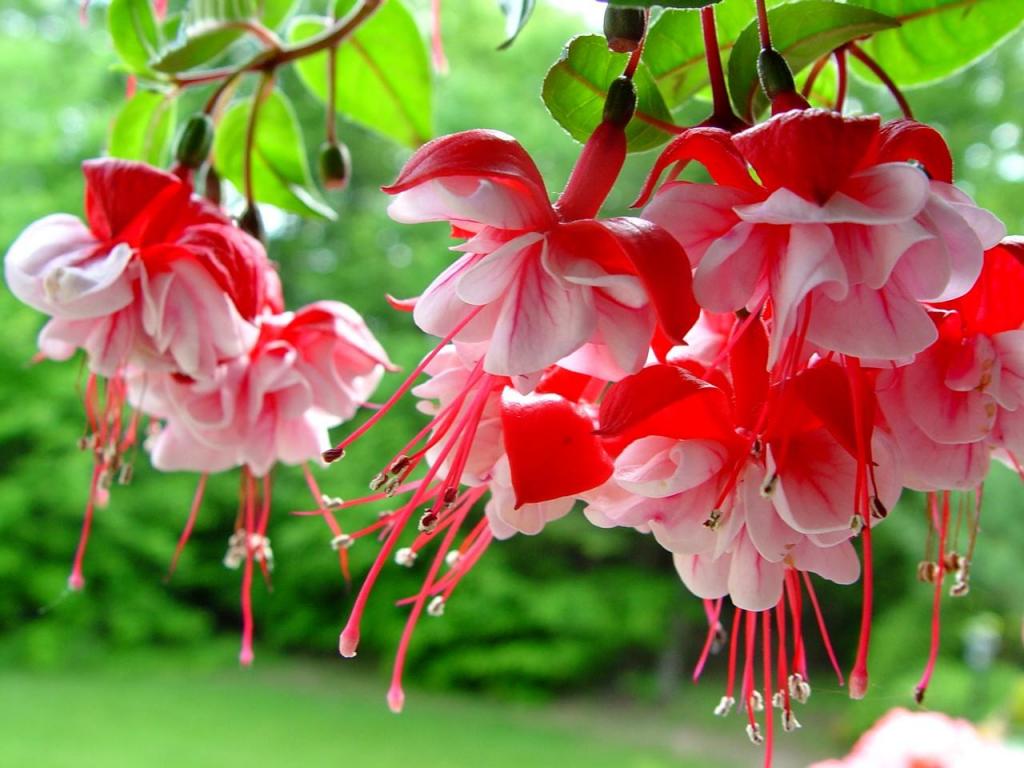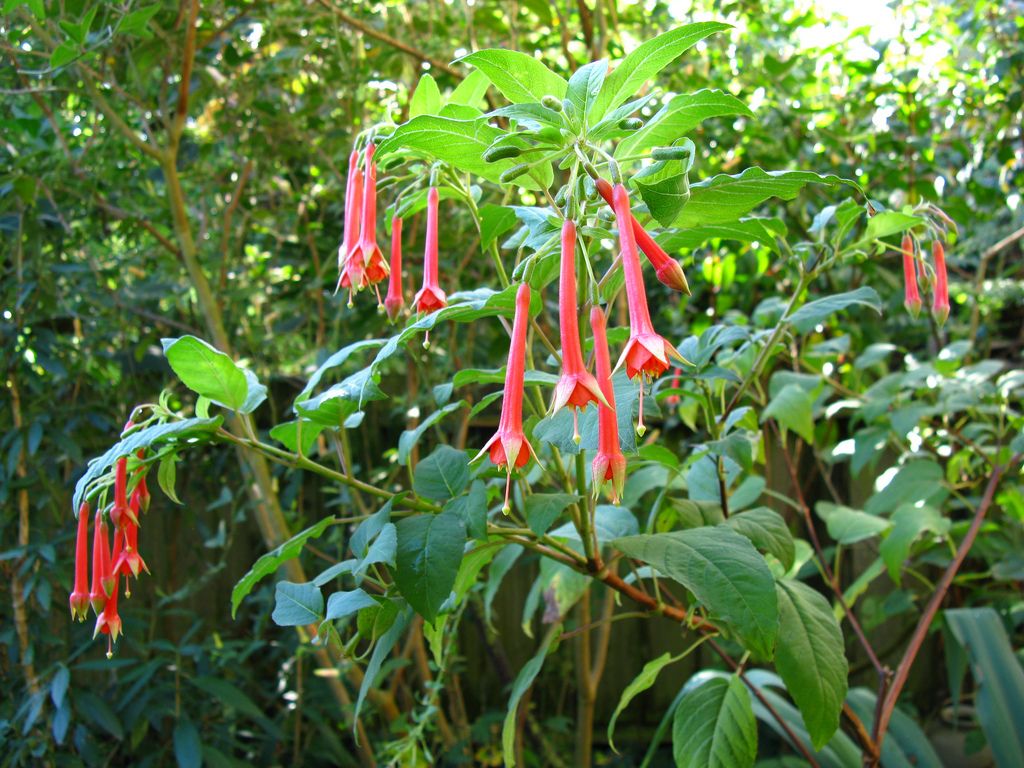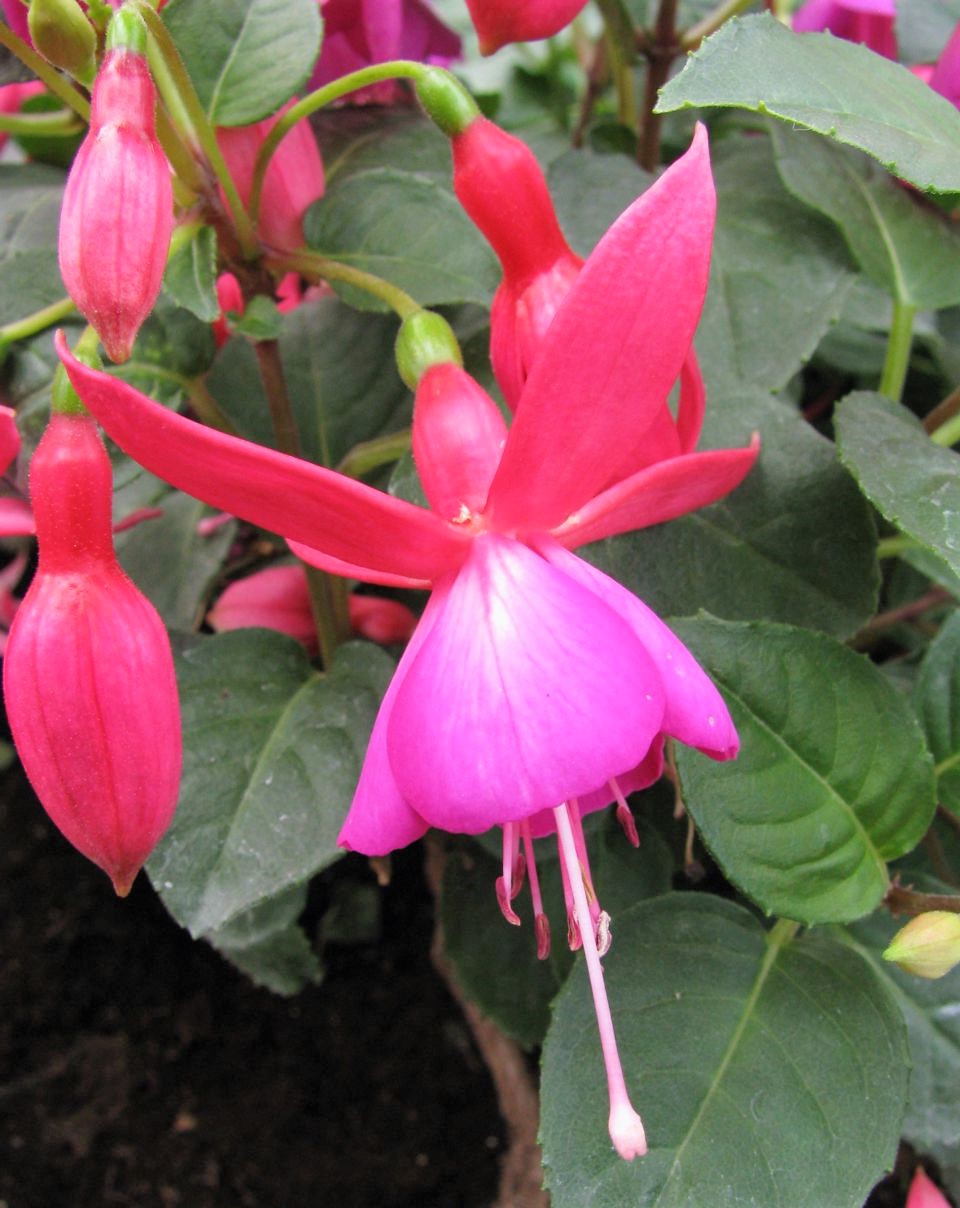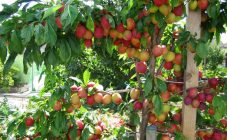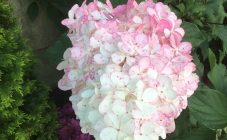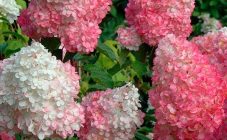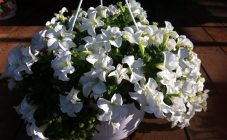Content:
Fuchsia is a genus of perennial ornamental evergreen shrubs, numbering over 100 species. Some representatives grow at home as a houseplant, other specimens thrive in open ground or in a greenhouse.
What fuchsia looks like
Varietal characteristics determine which part of the plant will have a flowering part - double or simple. Both fuchsia terry and fuchsia simple have one feature - their original flowers look like tiny dancers in fluffy skirts of various shades. Therefore, growers call the plant a Japanese or Chinese lantern and an elf flower. And in common parlance, you can find the name gypsy earrings. This name also bears fuchsia due to the presence of bright curved petals on each flower.
TOP 10 best fuchsia varieties
Chinese lanterns are very popular among professional gardeners and amateur florists. In addition to the fact that fuchsia varieties are very different, it is unpretentious and looks great.
The best modern varieties are:
| Variety name | Plant height, type of shoots | Description of flowers | Leaf description | Cultivation method what the plant is used for |
|---|---|---|---|---|
| Bolivian | Up to 1 m | Large, dark red or white. | Egg-shaped, slightly pointed tip. Less than 15 cm long, 0.5 cm wide. Velvety to the touch. | Indoor floriculture |
| Collected in clusters with peduncles about 30 cm. | ||||
| Slim or graceful | Up to 3 m | Light purple or violet on long and slender peduncles, clustered in clusters. | Lanceolate with a finely toothed edge, attached on long, red petioles. | Flower beds and flower beds |
| Thin with pubescence, reddish tint. | ||||
| Shiny | Up to 2 m | Bright crimson with a purple hue. | Large, oval with jagged edges, purplish green. | Flower beds and flower beds |
| Reddish thin, flexible. | Collected in hanging brushes, collected at the top of the plant. | |||
| Three-leafed | Up to 0.5 m | Bright red, collected in brushes. | Ovate-oblong. The top side is reddish green and the bottom is brownish red. There is fluff along the veins. | Creation of decorations and expositions |
| Covered with short hairs. | ||||
| Magellan | Up to 3 m | Collected in inflorescences. | Purple, about 4 cm in size with fluff along the veins. | For the decoration of window openings and walls |
| Reclining | Up to 1 m | Solitary pink-red or orange without petals. | Small, rounded, with long petioles. | Decoration of balconies and loggias |
| Sparkling | Up to 2 m | Scarlet red. After flowering, edible berries are formed, collected in a brush. | Large, serrated. | Creation of flower arrangements |
| Slendens | Up to 2 m | In the form of a long and red tube with greenish petals. The fruit has a lemon flavor. | Long (up to 20 cm), pointed at the tips. | Creation of flower arrangements |
| Thyroid | Up to 3 m | Pink, purple, purple, long and thin, gathered in a cluster. | Same as sparkling fuchsia. | To create flower arrangements |
| Bright red | Up to 1 m | Bright red with purple accents. | Oval, with short petioles. | Indoor floriculture |
| Thin. |
Reviews of the best fuchsia varieties are constantly updated.
Conditions for growing ornamental shrubs
In order for an ornamental shrub to feel good, you should know and follow certain rules for each variety.
Bright red and Bolivian fuchsia
Place flower pots on the east or north side. Even here, plants need to be protected from direct sunlight. In the dark, the bushes need a fluorescent lamp or phytolamp backlight.
When flowers appear, the pot with the plant should not be touched. With any movement, the buds fall off.
Watering is carried out regularly when the topsoil dries up. The water drained into the pan is drained.
Top dressing with complex fertilizer is needed once every 2 weeks in all seasons, except for winter.
To increase the humidity of the ambient air, containers with clean water are placed next to the pot or fuchsias are sprayed. Otherwise, dry air will cause yellowing and wilting of leaves and flowers.
Fuchsia Shiny
Loves semi-shaded places. From the beginning of the warm season to the onset of autumn, it requires abundant irrigation with non-rigid water, which has been settled for several days.
Three-leaf fuchsia
This hardy plant is grown outdoors. For planting, choose a slightly shaded place with fertile and neutral soil. Regular watering ensures that the ground around the plant is always moist. Top dressing is done weekly with liquid fertilizer.
Magellanic fuchsia
Feels great outdoors under snow cover. A hardy plant can overwinter on a glazed loggia.
Recumbent fuchsia
The shrub does not tolerate the scorching sun at all. It should be planted in a wire basket filled with peat moss with the addition of perlite and vermiculite.
At the beginning of autumn, the plant can be transferred from the site to a room with soft light and a temperature not exceeding 18 ° C. Watering should be done in moderation. With the onset of spring, fuchsia is transferred to a warmer place and periodically fed. The basket with the plant is taken out into the street only after a steady heat has been established.
Insect pests and control measures
All fuchsia varieties can be damaged by the following parasites:
- Greenhouse aphids. A small pale green insect sucks sap from young leaves. To destroy the pest, all surfaces in the greenhouse are washed with hot water with liquid potassium soap and actellic dissolved in it.
- Whitefly. The insect has a pair of wings, is capable of jumping and flying. Whitefly larvae suck sap from young stems and leaves. They destroy the pest with drugs that can be purchased in specialized stores.
- Spider mite. A tiny reddish insect covers shoots and leaves with a net of the finest cobweb, where it breeds its offspring. To eliminate the disaster, the plant is washed with hot soapy water or treated with special preparations.
Supplement to the TOP-10 of the best fuchsia varieties
The following varieties are not included in the top ten, since flower growers have not yet fully appreciated them, but they will amaze anyone with their flowering:
- Fuchsia variety Promessa, or fuchsia Ratatouille. No less interesting is the combination of white or pale pink with a rich purple hue. This is what opened flowers look like. This plant does not have the largest corollas of fuchsia varieties. The Swingtime fuchsia variety has a similar color, but the flowers are peach rather than purple.
- Fuchsia Unusual. Ampel plant, striking those around with its delicate flowers, covered with a light down.The petals are delicate, pink and beige shades prevail. Sometimes this fuchsia variety has white flowers.
- Annabel fuchsia. A distinctive characteristic is that the main stem and appendages quickly lignify, creating a solid support for the petals. Thanks to this, the corollas became large and heavy, and the pedicels became thick and squat.
- Fuchsia Blue Angel. Despite its large flowers, this plant can be grown in hanging baskets. Vegetative reproductive organs are small in size, which allows you to fit the entire bush in a small pot.
- Fuchsia Fey. The flowers of this ampelous fuchsia look the same as those of the Unusual variety. However, it has long stems, leaves and shoots.
- Fuchsia New Millennium. The elegant flowers of a dark purple shade close to black will stand out significantly from the rest of the varieties. Therefore, it is recommended to plant them separately so as not to overshadow the beauty of other elf flowers. Fuchsia Rohees New Millennium has a similar exotic appearance, but some flowers may have signs of an intermediate inheritance, that is, be lighter shades.
Modern varieties
In addition to the fuchsia varieties presented above, the gardener can choose the appropriate one from the more modern ones, which have not yet become widespread among gardeners.
- Natasha Sinton fuchsia corollas have an unusual pink color, which personify purity.
- Shades of fuchsia Bella Rosella can amaze even an experienced gardener with their richness. This is the natural color of the variety, although many believe that corollas of this color cannot be found in nature.
- Fuchsia Marinka is not easy to distinguish from the previous one, but these plants have denser petals and their number is several times greater.
- The description of the corolla of the Izabela Cieszynska fuchsia variety is unusual: it seems that inside the outer layer of petals there are several more flowers, they can be so lush.
- Fuchsia with the name Grandi Si is frost-resistant. It is because of this that the plant does not require special care during the cold season.
- Fuchsia Bisentenial corollas have a rare color: they are of a peach shade, turning into a rich orange.
Thanks to the actions of breeders, any florist can choose a representative of the fuchsia genus to their liking. All varieties differ in the shape of the buds, color, bush height. This will become the main selection criteria!
